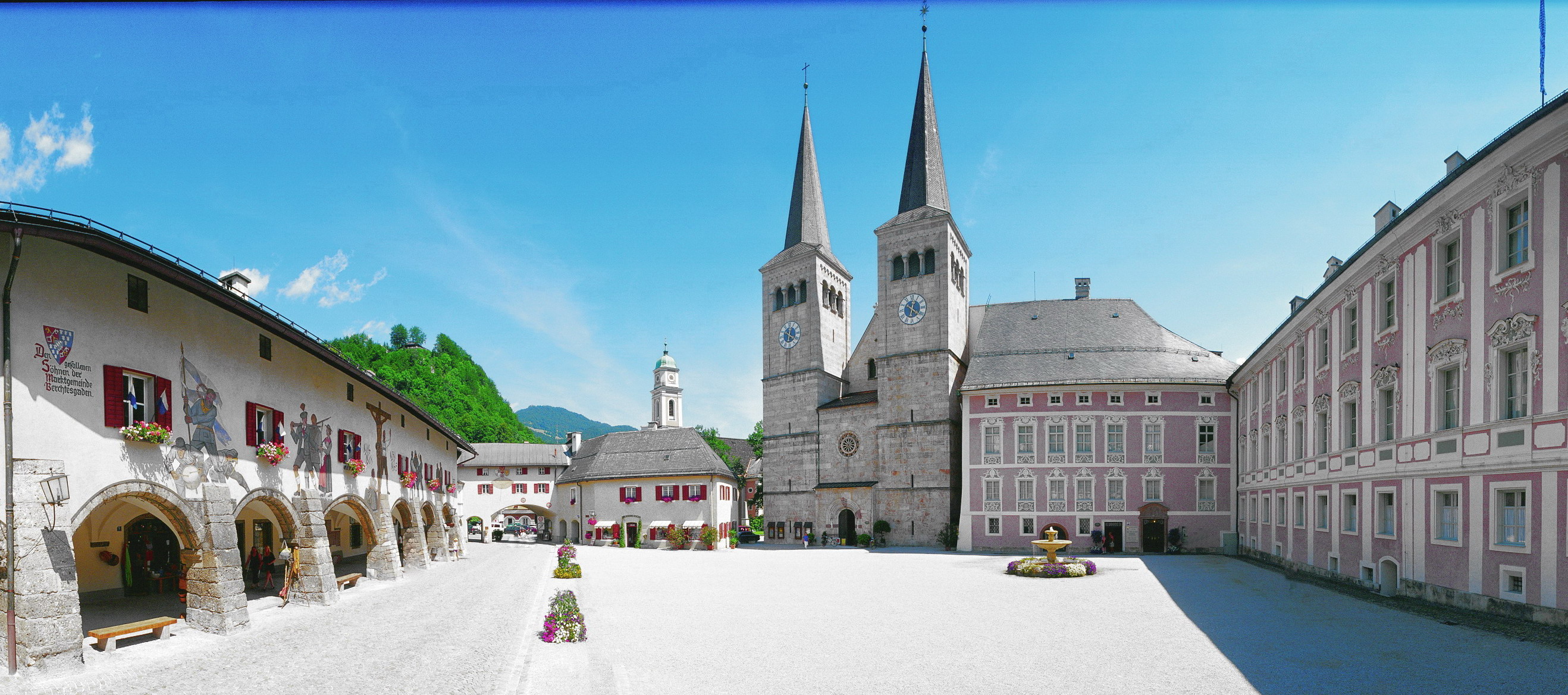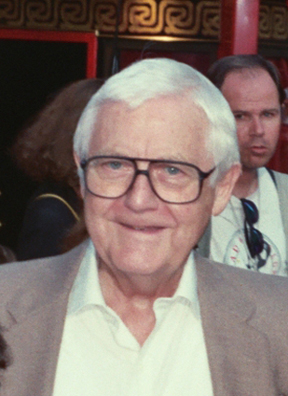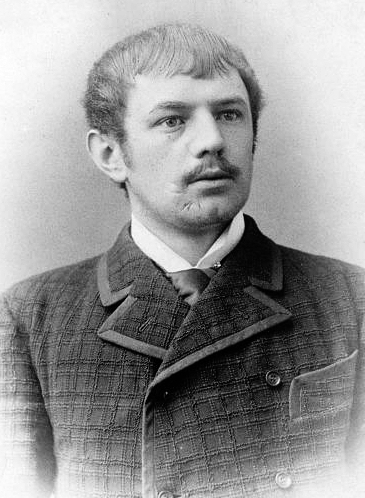|
Obersalzberg
Obersalzberg is a mountainside retreat situated above the market town of Berchtesgaden in Bavaria, Germany. Located about south-east of Munich, close to the border with Austria, it is best known as the site of Adolf Hitler's former mountain residence, the Berghof, and of the mountaintop Kehlsteinhaus, popularly known in the English-speaking world as the "Eagle's Nest". The Kehlsteinhaus today serves as a restaurant and tourist attraction. The rest of the Nazi-era buildings were demolished in the 1950s, but that history is preserved in the Dokumentationszentrum Obersalzberg museum, which opened in 1999. History The name of the settlement area derives from the rock salt deposits in the former Prince-Provostry of Berchtesgaden. Salt mining at ''Pherg'' is documented since the 12th century and a major salt mine opened in 1517. It was destroyed in 1834 but rebuilt and named the "Old Salt Works". The rectangular layout and some components still exist. The area was part of the prov ... [...More Info...] [...Related Items...] OR: [Wikipedia] [Google] [Baidu] |
Berghof (residence)
The Berghof () was Adolf Hitler's holiday home in the Obersalzberg of the Bavarian Alps near Berchtesgaden, Bavaria, Germany. Other than the '' Wolfsschanze'' ("Wolf's Lair"), his headquarters in East Prussia for the invasion of the Soviet Union, he spent more time here than anywhere else during his time as the '' Führer'' of Nazi Germany. It was also one of the most widely known of his headquarters, which were located throughout Europe. The Berghof was rebuilt and renamed in 1935 and was Hitler's holiday residence for ten years. It was damaged by British bombs in late April 1945, and again in early May by retreating SS troops, and it was looted after Allied troops reached the area. The Bavarian government demolished the burned shell in 1952. History The Berghof began as a much smaller chalet called ''Haus Wachenfeld'', a holiday home built in 1916 (or 1917) by ''Kommerzienrat'' Otto Winter, a businessman from Buxtehude. It was located near the ''Platterhof'', the former ... [...More Info...] [...Related Items...] OR: [Wikipedia] [Google] [Baidu] |
Dokumentationszentrum Obersalzberg
Dokumentation Obersalzberg is a museum in the Obersalzberg resort near Berchtesgaden, providing information on the use of the mountainside retreat by Nazi leaders, especially Adolf Hitler who regularly spent time in this area beginning in 1928. The museum was opened in 1999, and by 2007 had been visited by more than one million people. Historic site Located in the German state of Bavaria, close to the Austrian border, Obersalzberg in the 19th century was one of the earliest tourist destinations in the Berchtesgaden Alps. That changed, when Hitler purchased the '' Berghof'' (Mountain House) residence upon the Nazi seizure of power in 1933 and a large area was cordoned off and evacuated. After World War II, the premises were handed over to the State of Bavaria, however, they remained occupied by a United States Armed Forces recreation center and the General Walker Hotel for US troops, which had been the original Platterhof luxury hotel that had been used by the Nazis. The hotel wa ... [...More Info...] [...Related Items...] OR: [Wikipedia] [Google] [Baidu] |
Berchtesgaden
Berchtesgaden () is a municipality in the district Berchtesgadener Land, Bavaria, in southeastern Germany, near the border with Austria, south of Salzburg and southeast of Munich. It lies in the Berchtesgaden Alps. South of the town, the Berchtesgaden National Park stretches along three parallel valleys. The Kehlstein mountain (), with its '' Kehlsteinhaus'' (Eagle's Nest), is located in the area. Etymology ''Berchtesgaden'', Upper Bavaria (Achental), earlier ''Perchterscadmen'', ''Perhtersgadem'', ''Berchirchsgadem'', ''Berchtoldesgadem''; the word underwent a Latin distortion of Old High German ''parach'', Romance ''bareca'' 'hay shed'. After the basic meaning was forgotten, a variant word of Old High German ''gadem'' 'room, one-room hut' was added, implying the same meaning: 'hay shed'. Cf. Old High German ''muosgadem'' 'spice room'. There was a folk etymology that supported a derivation based on the legendary figure of ''Frau'' Perchta (Berchta), a woman (''Holle'' < ... [...More Info...] [...Related Items...] OR: [Wikipedia] [Google] [Baidu] |
Kehlsteinhaus
The (; known in English as the Eagle's Nest) is a building erected atop the summit of the Kehlstein, a rocky outcrop that rises above Obersalzberg near the southeast German town of Berchtesgaden. It was used exclusively by members of the Nazi Party for government and social meetings. It was visited on 14 documented instances by Adolf Hitler. Today, it is open seasonally as a restaurant, beer garden, and tourist site. Construction The ''Kehlsteinhaus'' sits on a ridge atop the Kehlstein, a subpeak of the Hoher Göll that rises above the town of Berchtesgaden. It was commissioned by Martin Bormann in the summer of 1937. Paid for by the Nazi Party, it was completed in 13 months. Twelve workers died during its construction. A wide approach road climbs over ; it includes five tunnels and one hairpin turn. It cost to build (about $247 million USD, inflation-adjusted for 2022). Hitler's birthday in April 1939 was considered a deadline for the project's completion, so work cont ... [...More Info...] [...Related Items...] OR: [Wikipedia] [Google] [Baidu] |
The Sound Of Music (film)
''The Sound of Music'' is a 1965 American Musical film, musical Drama (film and television), drama film produced and directed by Robert Wise from a screenplay written by Ernest Lehman, and starring Julie Andrews and Christopher Plummer, with Richard Haydn, Peggy Wood, Charmian Carr, and Eleanor Parker. The film is an adaptation of The Sound of Music, the 1959 stage musical composed by Richard Rodgers, with lyrics by Oscar Hammerstein II and a book by Lindsay and Crouse. It is based on the 1949 memoir ''The Story of the Trapp Family Singers'' by Maria von Trapp and is set in Salzburg, Austria. It is a fictional retelling of her experiences as governess to seven children, her eventual marriage with their father Captain Georg von Trapp, and their escape during the Anschluss in 1938. Filming took place from March to September 1964 in Los Angeles and Salzburg. ''The Sound of Music'' was released in the United States on March 2, 1965, initially as a limited roadshow theatrical releas ... [...More Info...] [...Related Items...] OR: [Wikipedia] [Google] [Baidu] |
Dietrich Eckart
Dietrich Eckart (; 23 March 1868 – 26 December 1923) was a German '' völkisch'' poet, playwright, journalist, publicist, and political activist who was one of the founders of the German Workers' Party, the precursor of the Nazi Party. Eckart was a key influence on Adolf Hitler in the early years of the Party, the original publisher of the party newspaper, the '' Völkischer Beobachter'' ("Folkist Observer"), and the lyricist of the first party anthem, " Sturmlied" ("Storming Song"). He was a participant in the failed Beer Hall Putsch in 1923 and died on 26 December of that year, shortly after his release from Landsberg Prison, of a heart attack. Eckart was elevated to the status of a major thinker upon the establishment of Nazi Germany in 1933. He was acknowledged by Hitler to be the spiritual co-founder of Nazism and "a guiding light of the early National Socialist movement." Early life Eckart was born on 23 March 1868 in Neumarkt, about southeast of Nuremberg in the King ... [...More Info...] [...Related Items...] OR: [Wikipedia] [Google] [Baidu] |
Richard Voss
Richard Voss (2 September 1851 – 10 June 1918) was a German dramatist and novelist. In standard German orthography, his surname is printed as Voß. Biography Voss was born on 2 September 1851, at Neu-Grape, the son of a country squire. Though intended for the life of a country gentleman, he showed no inclination for outdoor life, and on his return from the war of 1870-71, in which he was wounded, he studied philosophy at Jena and Munich, and then settled at Berchtesgaden. In 1884, Charles Alexander, Grand Duke of Saxe-Weimar-Eisenach, appointed Voss as librarian of the Wartburg, but he later resigned the post, due to ill health. Voss spent 25 years of his life living at Frascati, near Rome, where he wrote many of his novels and plays. He was granted honorary citizenship of the town. Main works Plays *''Savonarola'' (1878) *''Magda'' (1879) *''Die Patricierin'', a classical drama, which won the Schiller prize in 1896 (The Patrician Dame; 1880) *''Pater Modestus'', dealing w ... [...More Info...] [...Related Items...] OR: [Wikipedia] [Google] [Baidu] |
Johannes Brahms
Johannes Brahms (; ; 7 May 1833 – 3 April 1897) was a German composer, virtuoso pianist, and conductor of the mid-Romantic period (music), Romantic period. His music is noted for its rhythmic vitality and freer treatment of dissonance, often set within studied yet expressive contrapuntal textures. He adapted the traditional structures and techniques of a wide historical range of earlier composers. His includes four symphony, symphonies, four concertos, a Requiem, much chamber music, and hundreds of folk-song arrangements and , among other works for symphony orchestra, piano, organ, and choir. Born to a musical family in Hamburg, Brahms began composing and concertizing locally in his youth. He toured Central Europe as a pianist in his adulthood, premiering many of his own works and meeting Franz Liszt in Weimar. Brahms worked with Ede Reményi and Joseph Joachim, seeking Robert Schumann's approval through the latter. He gained both Robert and Clara Schumann's strong support ... [...More Info...] [...Related Items...] OR: [Wikipedia] [Google] [Baidu] |
Ludwig Ganghofer
Ludwig Ganghofer (7 July 1855 – 24 July 1920) was a German writer. He has been called the "most-adapted author in the history of German cinema", as many of his novels were turned into films. Biography Ganghofer was born in Kaufbeuren, Bavaria, the son of forestry official August Ganghofer (1827–1900). His younger sister Ida (1863–1944) married the geologist and geographer Albrecht Penck in 1886. The geomorphologist Walther Penck was Ganghofer's nephew. He graduated from gymnasium secondary school in 1873 and subsequently worked as a fitter in Augsburg engine works. In 1875, he entered Munich Polytechnic as a student of mechanical engineering, but eventually changed his major to history of literature and philosophy, which subjects he studied in Munich, Berlin and Leipzig. In 1879, he was awarded a doctorate from the Leipzig University. Ganghofer wrote his first play "Der Herrgottschnitzer von Ammergau" (''The Crucifix Carver of Ammergau'') in 1880 for the Munich Gärtne ... [...More Info...] [...Related Items...] OR: [Wikipedia] [Google] [Baidu] |
Ludwig Knaus
Ludwig Knaus (5 October 1829 – 7 December 1910) was a German genre painter of the younger 7 Düsseldorf school of painting. Biography He was born at Wiesbaden and studied from 1845 to 1852 under Sohn and Schadow in Düsseldorf. His early works, like ''The Gamblers'' in the Düsseldorf Gallery, are in the manner of that school, being dark and heavy in color. This deficiency was remedied by study at Paris, whither he went in 1852 and enrolled as a pupil of Thomas Couture. In 1853 his ''Morning after the Kermess'' received the second gold Medal of the Salon and made him a celebrated painter. Except for a year's study in Italy he remained in Paris until 1860.''New International Encyclopedia'' His chief works of this period include ''The Golden Wedding'', ''The Baptism,'' and ''The Promenade'', purchased for the Luxembourg. From 1861 to 1866 he practiced at Berlin, producing such works as ''Boys Playing Cards'', ''Looking for a Bride'' (Wiesbaden Museum), and ''His Highness ... [...More Info...] [...Related Items...] OR: [Wikipedia] [Google] [Baidu] |
Joseph Joachim
Joseph Joachim (28 June 1831 – 15 August 1907) was a Hungarian Violin, violinist, Conducting, conductor, composer and teacher who made an international career, based in Hanover and Berlin. A close collaborator of Johannes Brahms, he is widely regarded as one of the most significant violinists of the 19th century. Joachim studied violin early, beginning in Buda at age five, then in Vienna and Leipzig. He made his debut in London in 1844, playing Ludwig van Beethoven's Violin Concerto (Beethoven), Violin Concerto, with Felix Mendelssohn conducting. He returned to London many times throughout life. After years of teaching at the Leipzig Conservatory and playing as principal violinist of the Gewandhausorchester, he moved to Weimar in 1848, where Franz Liszt established cultural life. From 1852, Joachim served at the court of Hanover, playing principal violin in the opera and conducting concerts, with months of free time in summer for concert tours. In 1853, he was invited by Robert ... [...More Info...] [...Related Items...] OR: [Wikipedia] [Google] [Baidu] |








